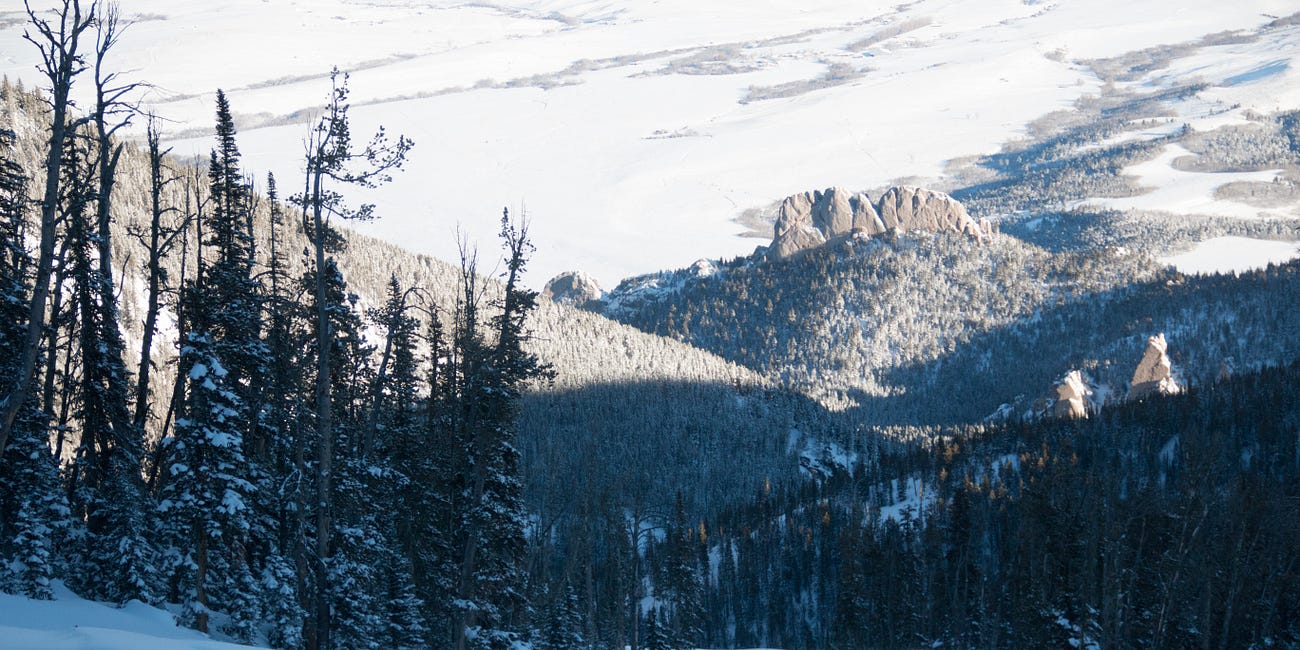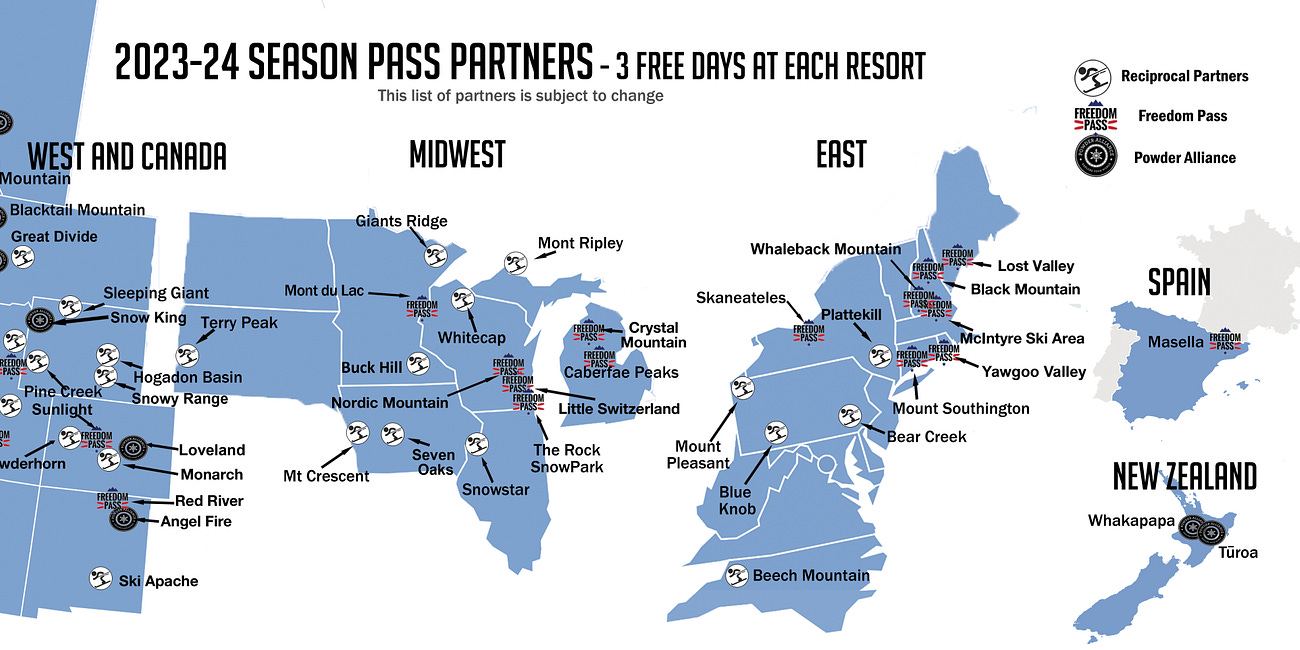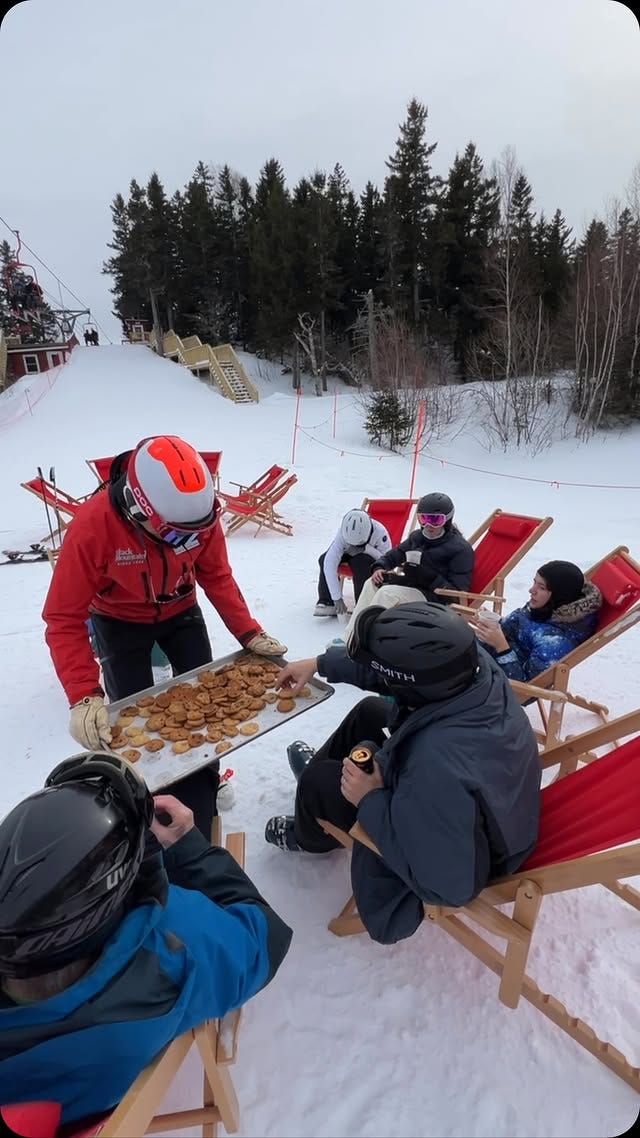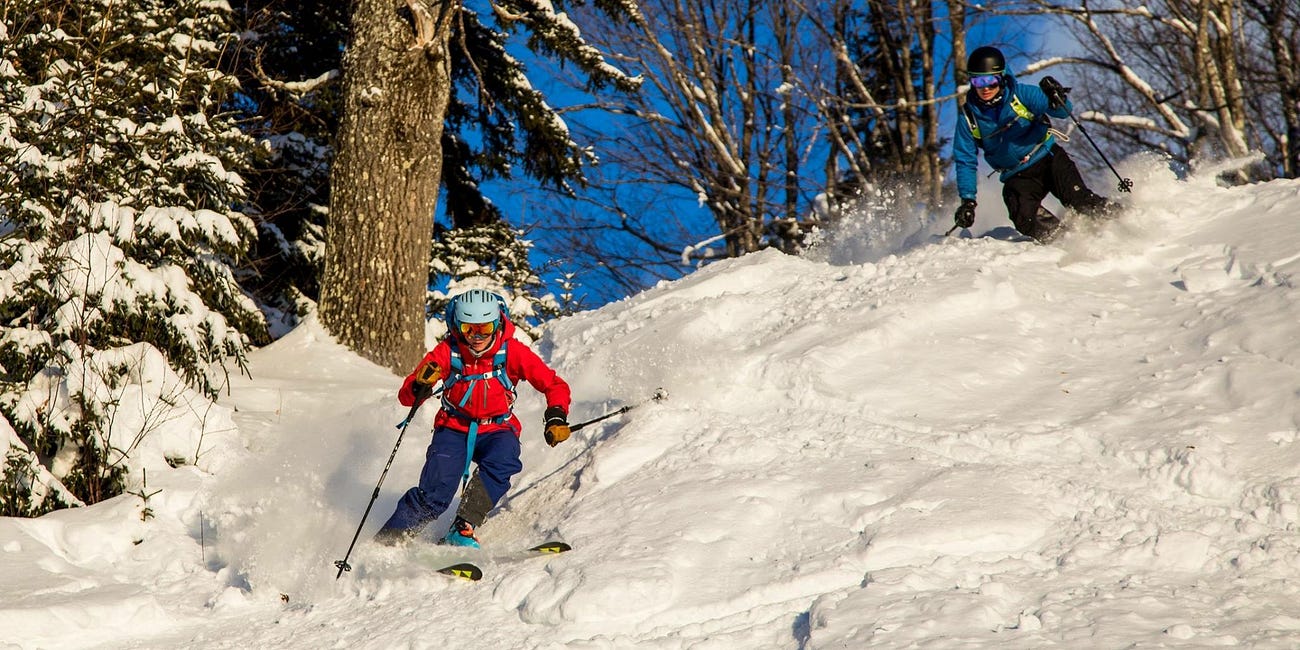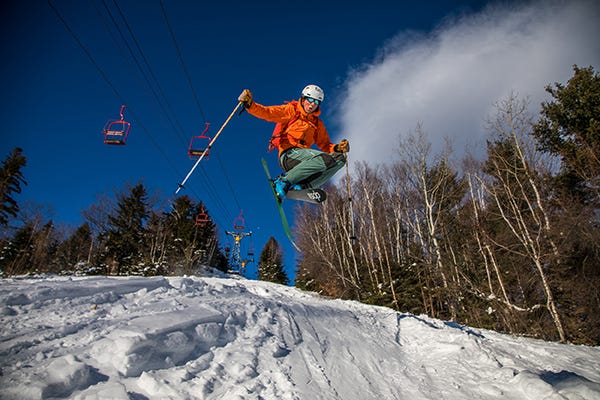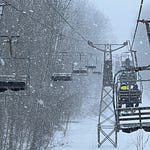Who
Erik Mogensen, Director of Indy Pass, founder of Entabeni Systems, and temporary owner and General Manager of Black Mountain, New Hampshire
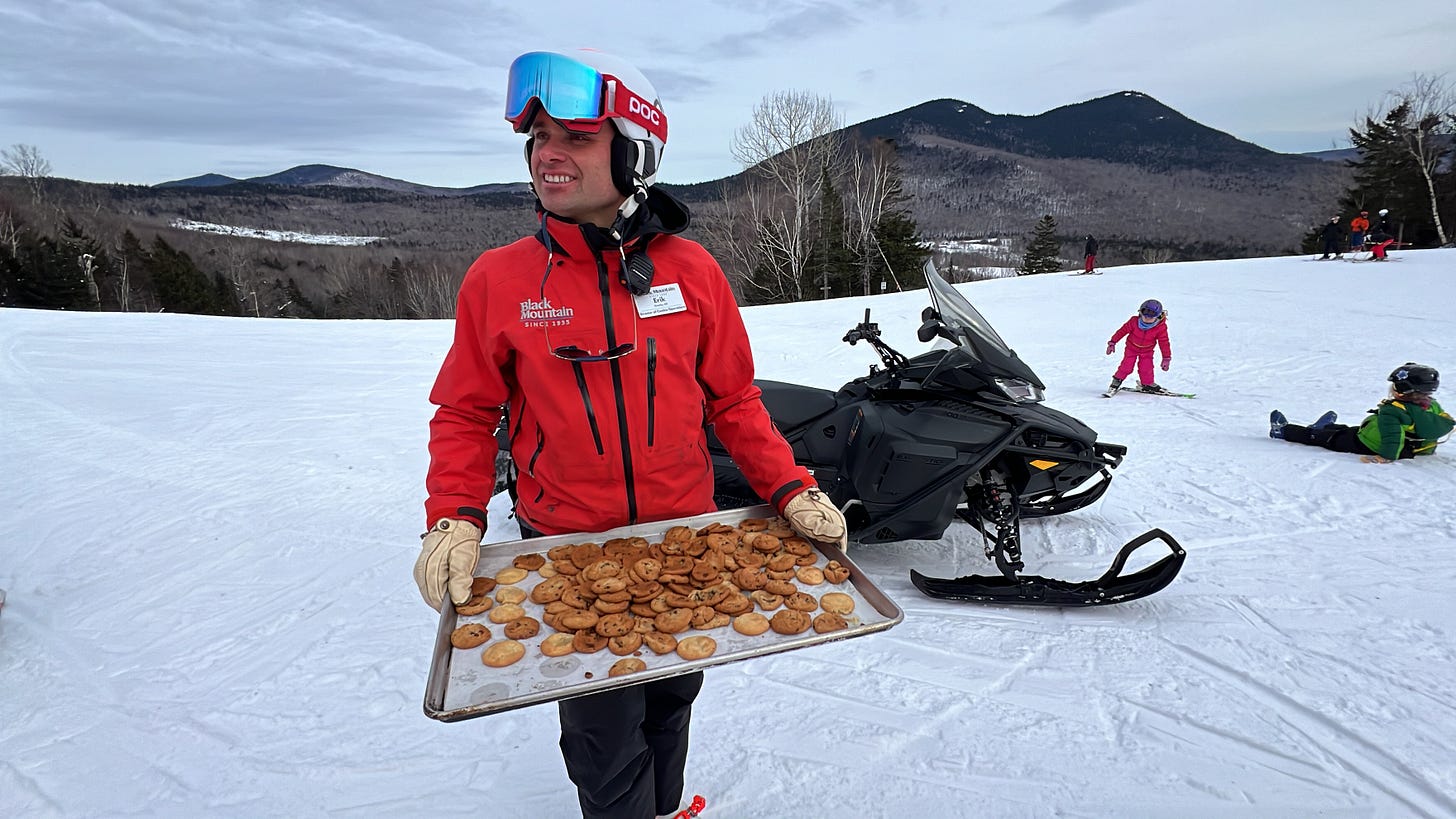
Recorded on
February 25, 2025
About Entabeni Systems
Entabeni provides software and hardware engineering exclusively for independent ski areas. Per the company’s one-page website:
Entabeni: noun; meaning: zulu - "the mountain"
We take pride in providing world class software and hardware engineering in true ski bum style.
About Indy Pass
Indy Pass delivers two days each at 181 Alpine and 44 cross-country ski areas, plus discounts at eight Allied resorts and four Cat-skiing outfits for the 2024-25 ski season. Indy has announced several additional partners for the 2025-26 ski season. Here is the probable 2025-26 Alpine roster as of March 2, 2025 (click through for most up-to-date roster):
Doug Fish, who has appeared on this podcast four times, founded Indy Pass in 2019. Mogensen, via Entabeni, purchased the pass in 2023.
About Black Mountain, New Hampshire
Click here for a mountain stats overview
Owned by: Indy Pass
Located in: Jackson, New Hampshire
Year founded: 1935
Pass affiliations: Indy Pass and Indy+ Pass – 2 days, no blackouts
Closest neighboring ski areas: Attitash (:14), Wildcat (:19), Cranmore (:19), Bretton Woods (:40), King Pine (:43), Pleasant Mountain (:48), Sunday River (1:00), Cannon (1:02), Mt. Abram (1:03)
Base elevation: 1,250 feet
Summit elevation: 2,350 feet
Vertical drop: 1,100 feet
Skiable acres: 140
Average annual snowfall: 125 inches
Trail count: 45
Lift count: 5 (1 triple, 1 double, 1 J-bar, 1 platter pull, 1 handletow – view Lift Blog’s inventory of Black Mountain’s lift fleet)
Why I interviewed him
I first spoke to Mogensen in the summer of 2020. He was somewhere out west, running something called Entabeni Systems, and he had insight into a story that I was working on. Indy Pass founder and owner-at-the-time Doug Fish had introduced us. The conversation was helpful. I wrote the story and moved on.
Mogensen didn’t. He kept calling. Kept emailing. There was something he wanted me to understand. Not about any particular story that I was writing, but about skiing as a whole. Specifically, about non-megapass skiing. It wasn’t working, he insisted. It couldn’t work without sweeping and fundamental changes. And he knew how to make those changes. He was already making them, via Entabeni, by delivering jetpack technology to caveman ski areas. They’d been fighting with sticks and rocks but now they had machine guns. But they needed more weapons, and faster.
I still didn’t get it. Not when Mogensen purchased Indy Pass in March 2023, and not when he joined the board at teetering-on-the-edge-of-existence Antelope Butte, Wyoming the following month. I may not have gotten it until Mogensen assembled, that October, a transcontinental coalition to reverse a New Hampshire mountain’s decision to drop dead or contributed, several weeks later, vital funds to help re-open quirky and long-shuttered Hickory, New York.
But in May of that year I had a late-night conversation with Doug Fish in a Savannah bar. He’d had no shortage of Indy Pass suitors, he told me. Fish had chosen Erik, he said, not because his longtime tech partner would respect Indy’s brand integrity or would refuse to sell to Megaski Inc – though certainly both were true – but because in Mogensen, Fish saw a figure messianic in his conviction that family-owned, crockpots-on-tabletops, two-for-Tuesday skiing must not be in the midst of an extinction event.
Mogensen, Fish said, had transformed his world into a laboratory for preventing such a catastrophe, rising before dawn and working all day without pause, focused always and only on skiing. More specifically, on positioning lunch-bucket skiing for a fair fight in the world of Octopus Lifts and $329 lift tickets and suspender-wearing Finance Bros who would swallow the mountains whole if they could poop gold coins out afterward. In service of this vision, Mogensen had created Entabeni from nothing. Indy Pass never would have worked without it, Fish said. “Elon Musk on skis,” Fish called* him. A visionary who would change this thing forever.
Fish was, in a way, mediating. I’d written something - who knows what at this point – that Mogensen hadn’t been thrilled with. Fish counseled us both against dismissiveness. I needed time to appreciate the full epic; Erik to understand the function of media. We still disagree often, but we understand and appreciate one another’s roles. Mogensen is, increasingly, a main character in the story of modern skiing, and I – as a chronicler of such – owe my audience an explanation for why I think so.
*This quote hit different two years ago, when Musk was still primarily known as the tireless disruptor who had mainstreamed electric cars.
What we talked about
Why Indy Pass stepped up to save Black Mountain, New Hampshire; tripling Black’s best revenue year ever in one season; how letting skiers brown bag helped increase revenue; how a beaten-up, dated ski area can compete directly with corporate-owned mountains dripping with high-speed lifts and riding cheap mass-market passes; “I firmly believe that skiing is in a bit of an identity crisis”; free cookies as emotional currency; Black’s co-op quest; Black’s essential elements; skiing’s multi-tiered cost crisis; why the fanciest option is often the only option for lifts, snowcats, and snowguns; what ski areas are really competing against (it isn’t other ski areas); bringing big tech to small skiing with Entabeni; what happened when teenage Mogensen’s favorite ski area closed; “we need to spend 90 percent of our time understanding the problem we’re trying to solve, and 10 percent of our time solving it”; why data matters; where small skiing is in the technology curve; “I think it’s become very, very obvious that where you can level the playing field very quickly is with technology”; why Entabeni purchased Indy Pass; the percent of day-ticket sales that Indy accounts for at partner ski areas; limiting Indy Pass sales and keeping prices low; is Indy Pass a business?; and why Indy will never add a third day.

Questions I wish I’d asked
Mogensen’s tenure at Indy Pass has included some aggressive moves to fend off competition and hold market share. I wrote this series of stories on Indy’s showdown with Ski Cooper over its cheap reciprocal pass two years ago:
These are examples of headlines that Indy Pass HQ were not thrilled with, but I have a job to do. We could have spent an entire podcast re-hashing this, but the story has already been told, and I’d rather move forward than back.
Also, I’d have liked to discuss Antelope Butte, Wyoming and Hickory, New York at length. We glancingly discuss Antelope Butte, and don’t mention Hickory at all, but these are both important stories that I intend to explore more deeply in the future.
Why now was a good time for this interview
Here’s an interesting fact: since 2000, the Major League Baseball team with the highest payroll has won the World Series just three times (the 2018 Red Sox, and the 2000 and ’09 Yankees), and made the series but lost it three additional times (the 2017 Dodgers and 2001 and ’03 Yankees). Sure, the world champ rocks a top-five payroll about half the time, and the vast majority of series winners sit in the top half of the league payroll-wise, but recent MLB history suggests that the dudes with the most resources don’t always win.
Which isn’t to say it’s easy to fight against Epic and Ikon and ski areas with a thousand snowguns and chairlifts that cost more than a fighter jet. But a little creativity helps a lot. And Mogensen has assembled a creative toolkit that independent ski area operators can tap to help them spin-kick their way through the maelstrom:
When ski areas join Indy Pass, they join what amounts to a nationally marketed menu for hungry skiers anxious for variety and novelty. “Why yes, I’ll have two servings of the Jay Peak and two Cannon Mountains, but I guess I’ll try a side of this Black Mountain so long as I’m here.” Each resulting Indy Pass visit also delivers a paycheck, often from first-time visitors who say, “By gum let’s do it again.”
Many ski areas, such as Nub’s Nob and Jiminy Peak, build their own snowguns. Some, like Holiday Valley, install their own lifts. The manly man manning machines has been a ski industry trope since the days of Model T-powered ropetows and nine-foot-long skis. But ever so rare is the small ski area that can build, from scratch, a back-end technology system that actually works at scale. Entabeni says “yeah actually let me get this part, Bro.” Tech, as Mogensen says in our interview, is the fastest way for the little dude to catch up with the big dude.
Ski areas can be good businesses. But they often aren’t. Costs are high, weather is unpredictable, and skiing is hard, cold, and, typically, far away from where the people live. To avoid the inconvenience of having to turn a profit, many ski areas – Bogus Basin, Mad River Glen, Bridger Bowl – have stabilized themselves under alternate business models, in which every dollar the ski area makes funnels directly back into improving the ski area. Black Mountain is attempting to do the same.
I’m an optimist. Ask me about skiing’s future, and I will not choose “death by climate change.” It is, instead, thriving through adaptation, to the environment, to technological shifts, to societal habits. Just watch if you don’t believe me.
Why you should ski Black Mountain
There’s no obvious answer to this question. Black is surrounded by bangers. Twin-peaked Attitash looms across the valley. Towering Wildcat faces Mt. Washington a dozen miles north. Bretton Woods and Sunday River, glimmering and modern, hoteled and mega-lifted and dripping with snowgun bling, rise to the west and to the east, throwing off the gravity and gravitas to haul marching armies of skiers into their kingdoms. Cranmore gives skiers a modern lift and a big new baselodge. Even formerly beat-up Pleasant Mountain now spins a high-speeder up its 1,200 vertical feet. And to even get to Black from points south, skiers have to pass Waterville, Loon, Cannon, Gunstock, and Ragged, all of which offer more terrain, more vert, faster lifts, bigger lodges, and an easier access road.
That’s a tough draw. And it didn’t help that, until recently, Black was, well, a dump. Seasons were short, investment was limited. When things broke, they stayed broken – Mogensen tells me that Black hadn’t made snow above the double chair midstation in 20 years before this winter. When I last showed up to ski at Black, two years ago, I found an empty parking lot and stilled lifts, in spite of assurances on social media and the ski area’s website that this was a normal operating day.
Mogensen fixed all that. The double now spins to the top every day the ski area is open. New snowguns line many trunk trails. A round of explosives tamed Upper Maple Slalom, transforming the run from what was essentially a cliff into an offramp-smooth drag-racer. The J-bar – America’s oldest continuously operating overhead cable lift, in service since 1935 – spins regularly. A handle tow replaced the old rope below the triple. Black has transformed the crippled and sad little mid-mountain lodge into a boisterous party deck with music and champagne and firepits roaring right beneath the double chair. Walls and don’t-do-this-or-that signs came down all over the lodge, which, while still crowded, is now stuffed with families and live music and beer glasses clinking in the dusk.
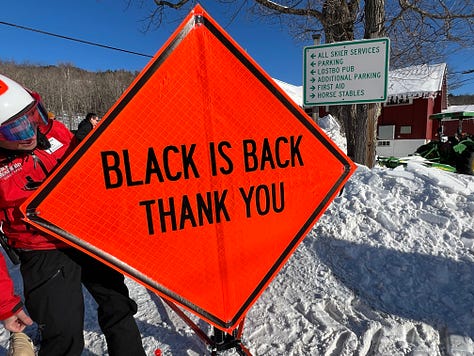
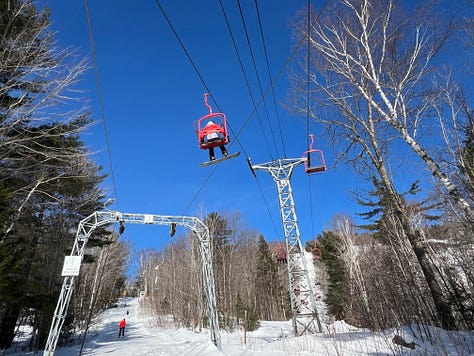
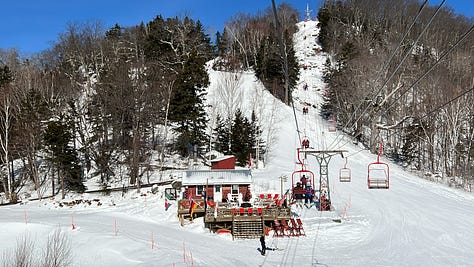
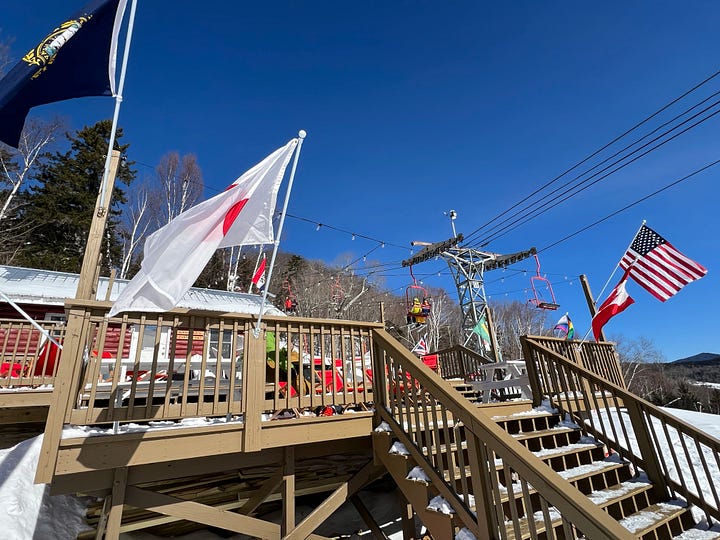
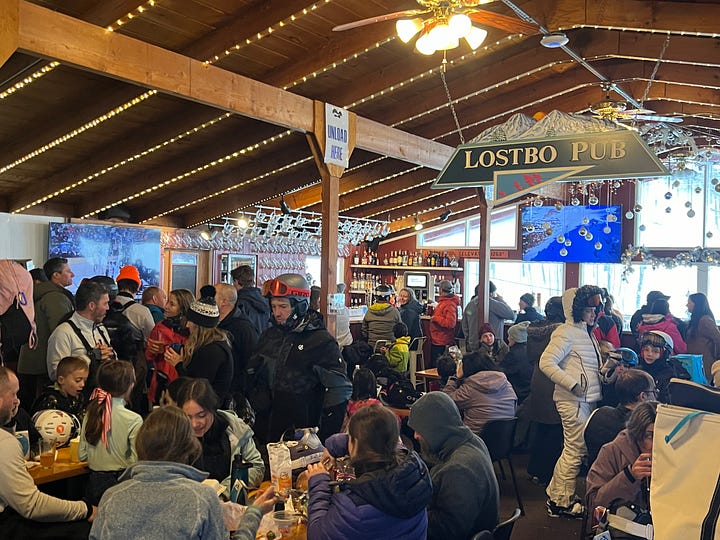
And this is year one. Mogensen can’t cross five feet of Black’s campus without someone stopping him to ask if he’s “the Indy Pass guy” and hoisting their phone for selfie-time. They all say some version of “thank you for what you’re doing.” They all want in on the co-op. They all want to be part of whatever this crazy, quirky little hill is, which is the opposite of all the zinger lifts and Epkon overload that was supposed to kill off creaky little outfits like this one.
Before I skied Black for three days over Presidents’ weekend, I was skeptical that Mogensen could summon the interest to transform the mountain into a successful co-op. Did New England really have the appetite for another large throwback ski outfit on top of MRG and Smuggs and Magic? All my doubt evaporated as I watched Mogensen hand out free hot cookies like some orange-clad Santa Claus, as I tailed my 8-year-old son into the low-angle labyrinths of Sugar Glades and Rabbit Run, as I watched the busiest day in the mountain’s recorded history fail to produce lift lines longer than three minutes, as Mt. Washington greeted me each time I slid off the Summit double.
Black Mountain is a special place, and this is a singular time to go and be a part of it. So do that.
Podcast Notes
On Black Mountain’s comeback
In October 2023, Black Mountain’s longtime owner, John Fichera, abruptly announced that the ski area would close, probably forever. An alarmed Mogensen rolled in with an offer to help: keep the ski area open, and Indy and Entabeni will help you find a buyer. Fichera agreed. I detailed the whole rapid-fire saga here:
A year and dozens of perspective buyers later, Black remained future-less heading into the 2024-25 winter. So Mogensen shifted tactics, buying the mountain via Indy Pass and promising to transform the ski area into a co-op:
On the Mad River Glen co-op
As of this writing, Mad River Glen, the feisty, single-chair-accessed 2,000-footer that abuts Alterra’s Sugarbush, is America’s only successful ski co-op. Here’s how it started and how it works, per MRG’s website:
Mad River Glen began a new era in 1995 when its skiers came together to form the Mad River Glen Cooperative. The Cooperative works to fulfill a simple mission;
“… to forever protect the classic Mad River Glen skiing experience by preserving low skier density, natural terrain and forests, varied trail character, and friendly community atmosphere for the benefit of shareholders, area personnel and patrons.” …
A share in the Mad River Cooperative costs $2,000. Shares may be purchased through a single payment or in 40 monthly installments of $50 with a $150 down payment. The total cost for an installment plan is $2,150 (8.0% Annual Percentage Rate). The installment option enables anyone who loves and appreciates Mad River Glen to become an owner for as little as $50 per month. Either way, you start enjoying the benefits immediately! The only other cost is the annual Advance Purchase Requirement (APR) of $200. Since advance purchases can be applied to nearly every product and service on the mountain, including season passes, tickets, ski school and food, the advance purchase requirement does not represent an additional expense for most shareholders. In order to remain in good standing as a shareholder and receive benefits, your full APR payment must be met each year by September 30th.
Black is still working out the details of its co-op. I can’t share what I already know, other than to say that Black’s organizational structure will be significantly different from MRG’s.





